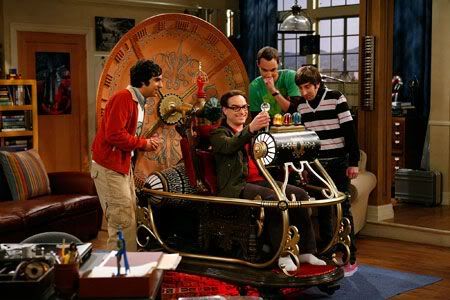The End
© 2006 Lemony Snicket
324 pages
The End of the Series of Unfortunate Events begins on the open ocean, with the Baudelaires and Count Olaf in the same boat -- having escaped a burning hotel and an angry mob. Here is where the story that began with the untimely demise of the Baudelaire parents comes to its end -- and it is quite an end. In due time, a storm destroys Olaf's yacht and the four wash up on an island with white sandy beaches -- one that appears to be a safe haven occupied by a community of people who are committed to simple living who aren't fooled for a second by Count Olaf. That they aren't fooled by Count Olaf like every other adult in this book is surprising and dramatic: it renders Olaf powerless and changes the balance of power completely.
Unfortunately for Violet, Klaus, and Sunny, things are not always as they seem. The island is safe, but utterly boring and controlled by an old man named Ishmael ("Call me Ish," he always says). Ishmael does not pretend to be king, like Olaf does -- he simply possesses a strong power of suggestion and an unlimited supply of coconut juice that acts as an opiate. The kids realized straightaway that Ishmael isn't the kindly old "facilitator" he seems to be: he knew who Count Olaf was, and he knew that the Baudelaires were orphans. Clearly there's more going on here than meets the eye, and indeed they find that the island -- where "everything washes up, eventually" -- is not isolated from the world of their past, but is indeed very connected with it. Its story is their parents' story, and Olaf's story, and the Snickets' story -- and it is a story the Baudelaires are now caught up in and will fulfill.
The End is dramatically different from the twelve books preceding in that Count Olaf is utterly out of his element. No one believes him: he has no power. His and the kids' arrival has stirred up the past and will destroy the community on the island, but he will not gain from it. Surprisingly, he gains dimensions: he communicates with the children as people, not just as his victims -- conveying sympathy to them while the reader feels sympathy for Olaf. It's not what I had expected. What happens in The End I will not tell in full: I think I may have been more engrossed in this one than in any other. It was...well, moving. I think Snicket is at his best here.
The series as a whole has been enjoyable: there's a reason I can plow through five books in a few days and not feel tired of it. Frankly, I'm tempted to watch the movie again. It has a number of strengths. It takes its audience seriously, for one. The children who I expect constitute the bulk of the audience are talked to directly: Snicket connects with them. I think it is true that most kids feel a sense of alienation from adults when they get older -- treated as if they aren't the intelligent and feeling humans that adults are supposed to be. Snicket acknowledges that sense, and he plays with it using the Baudelaire's complete inability to get through to any adults. It is in this way that he is slightly "subversive", because he does talk to children frankly, and he tells them that some of the stories they hear from adults are utterly asinine (not in those words) and not worth listening to -- stories like the Boy Who Cried Wolf and the Little Engine that Could.
But Snicket's entire audience isn't children: I expect parents, librarians, and other adults who aren't too embarrassed to go into the children's section of the library are reading as well, and Snicket writes to us. I've lost track of the number of little jokes written into the text for the benefit of adults or very well-read children. (Speaking of which, the books are educational in that they are constantly building vocabulary for readers: some of the words Snicket uses even I haven't heard of.) Generally speaking, the narrative style should be enjoyable by most everyone. Snicket is dryly hilarious, and a joy to read even though the series is very dark indeed. Topping all of this off is the fact that the series isn't shallow: it's not just something to be read and forgotten. It convey important messages to children -- messages like that the world can be a very dark and dangerous place, but that people can show "moral stamina" and stay true to themselves -- that giving in won't work.
I would suggest that those who are in the position of recommending books to children read a few of these to see what they're like -- and that those of you who are not in a position of recommend books to children try one or two anyway, because they're funny and more than a little dark.
